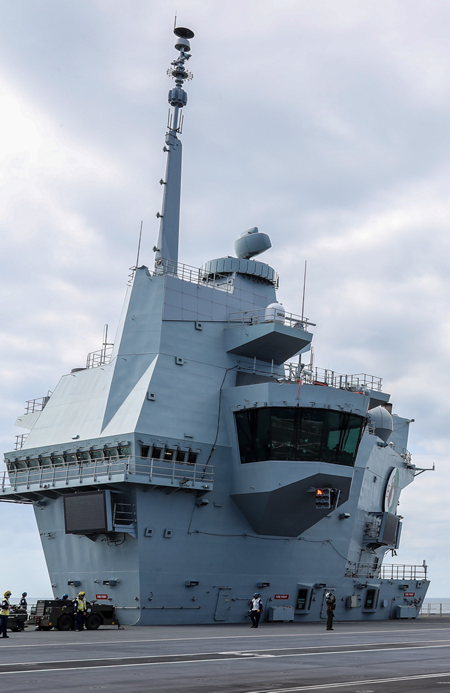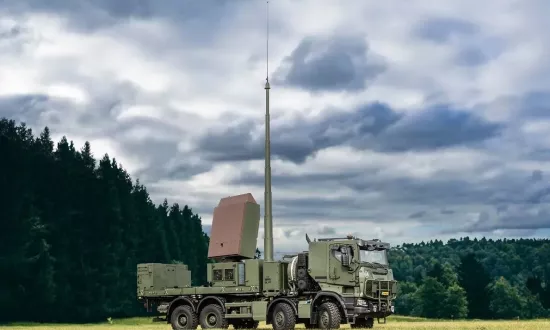On-board HMS Queen Elizabeth – The story behind the tower of Air Power

One of the most enduring images of Carrier Strike Group 21 as the deployment sails across the globe is the iconic sight of HMS Queen Elizabeth’s unique twin island design.
Originally designed by Thales, the twin islands configuration means that the ship has a dedicated rear island to direct air operations, while the forward island and bridge controls the ship’s navigation. Both islands are designed to switch functionality if required, giving the carrier a key redundancy factor in an operational environment.
And the rear island is home to some truly innovative technology. Imagine the glass of a flying control tower so strong that it could withstand a strike equivalent to a direct hit from the blade tip of a Chinook helicopter. The tower looks down onto a hugely complex and demanding four acre flight deck where visibility and control are critical.
One of the biggest successes of the Aircraft Carrier Alliance was to bring together specialist companies and experts across industry to provide the most innovative solutions. And the story of the flying control tower incorporates supply chain partnering at its best.
As a founding member of the ACA, Thales (like its partners BAE, Babcock and the Ministry of Defence) had specific responsibilities within the alliance. One of these was the leadership of the platform design and aviation teams.
The glass flying control position (or FLYCO), fitted onto the rear island, is the operational centre controlling all air operations and is closely linked to the ship’s operations room, navigation bridge, flight deck and hangar operations centre. Thales also provides the cutting edge communications system to support the ship’s air operations.
As part of its aviation lead responsibilities, Thales led the procurement of the FLYCO from the Special Projects division of Ipswich-based key supplier Tex ATC Ltd, one of the world’s leading providers of military and civilian airfield visual control rooms.
It amazes me the depth of Engineering specialisation that exists in the UK. Tex ATC is a great example of the many niche companies that operate in the aviation sector, relatively unknown to the public but world renowned for their visual control room solutions. It was a pleasure to work alongside Tex ATC and the result of their efforts is very visible to anyone who has seen the aircraft carriers
Jim Bennett, QEC Programme Director
The FLYCO position provides the operators with an unparalleled operational working space, with three metre tall specially glazed panels, giving more than 290 degrees of view over the flight deck. The multi-layered glass – designed to provide solar and noise protection – is also incredibly strong.
Thales originally approached Tex ATC as an acknowledged specialist in delivering state-of-the-art flying control solutions. The company had previously designed and built the visual control room at RAF Coningsby in preparation for the arrival of the Typhoon aircraft.
Tex ATC’s experience in specialist control environments for military applications led to their delivery of visual control rooms at RAF Linton-on-Ouse, RAF Mildenhall, RNAS Yeovilton and Camp Bastion in Afghanistan. Around 100 people in the company and its supply chain were involved in the delivery of the FLYCO.
Find out more about Thales and the CSG21 tour here.


